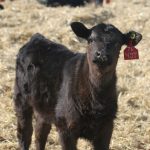UPDATED: September 8, 2025 – Ear infections are a common occurrence in young cattle. They can be seen at various ages, including young suckling calves, in older unweaned calves and also in weaned calves in the feedlot. What are the signs and symptoms of ear infections? The diagnosis of an inner ear infection is usually easy […] Read more
Stories by John Campbell, DVM, DVSC
Clinical trials used to set antimicrobial withdrawal times
It’s becoming common to see the words, “raised without the use of antibiotics,” on the meat we buy in the grocery store or on the menu of many popular restaurants. That phrasing is much more preferable to the sometimes used “antibiotic free,” which describes certain animal proteins. In Canada, we are very certain that all […] Read more
Vaccines, biosecurity offer easy ways to combat IBR virus
Infectious bovine rhinotracheitis is of major importance to cattle populations throughout the world. IBR infections are responsible for a number of different disease syndromes including respiratory disease, eye infections and abortion. The virus that causes IBR is found only in cattle but it is from the herpes virus family, which is the same virus family […] Read more

Tackling pre-weaning respiratory disease in beef calves
When we think of bovine respiratory disease in beef cattle, we often think of the “shipping fever” pneumonias that occur in weaned calves shortly after arrival in the feedlot. Respiratory disease is the most common cause of death of feedlot cattle, and a great deal of research has been focused on the disease at this […] Read more
Can temperament affect reproductive performance?
The calf crop percentage is often used as an overall measure of cow-calf herd productivity and is calculated by the number of calves weaned divided by the number of cows exposed to breeding. The goal is to have a calf-crop percentage of at least 85 percent. Ultimately, we would like a high percentage of our […] Read more

Mycotoxins remain diagnostic problem for experts
Mycotoxins are naturally produced by moulds in the field and during storage of forages and grain. There are a variety of compounds produced and as many as 500 different specific mycotoxins have been identified. However, when veterinarians or producers submit feed for mycotoxin testing, the diagnostic laboratory usually tests for only a limited number of […] Read more
Toe tip necrosis syndrome can be big problem in feedlots
Lameness is an economically important disease in all cattle operations. In dairy cows it is described in the Canadian Dairy Code of Practice as one of the most serious and economically important issues, which can have a major effect on dry matter intake, reproduction and early culling. As a result, much of the research on […] Read more
Wildlife can harbour bovine tuberculosis
The current outbreak of bovine tuberculosis in Alberta has caused significant problems for many cow-calf producers who have had their herds quarantined as a result of the investigation by the Canadian Food Inspection Agency. The timing of the outbreak, which has also led to quarantines in parts of Saskatchewan, has made it difficult for producers […] Read more

Body condition scoring easy, effective
Cattle producers have seen major changes in winter feeding management over the last decade or so. Many cows are still fed in traditional dry lots on stored feeds, but a significant number of producers have shifted their management to more extensive winter feeding arrangements, such as bale grazing or swath grazing. Regardless of how cows […] Read more

Imperfect testing tools makes Johne’s disease control difficult
Johne’s disease is considered by some to be a disease that primarily affects dairy cattle. While the disease is not as common in beef cattle, it can represent a significant problem in herds dealing with the infection. Johne’s disease was first de-scribed in 1826 and is a bacterial infection that results in a syndrome of […] Read more




